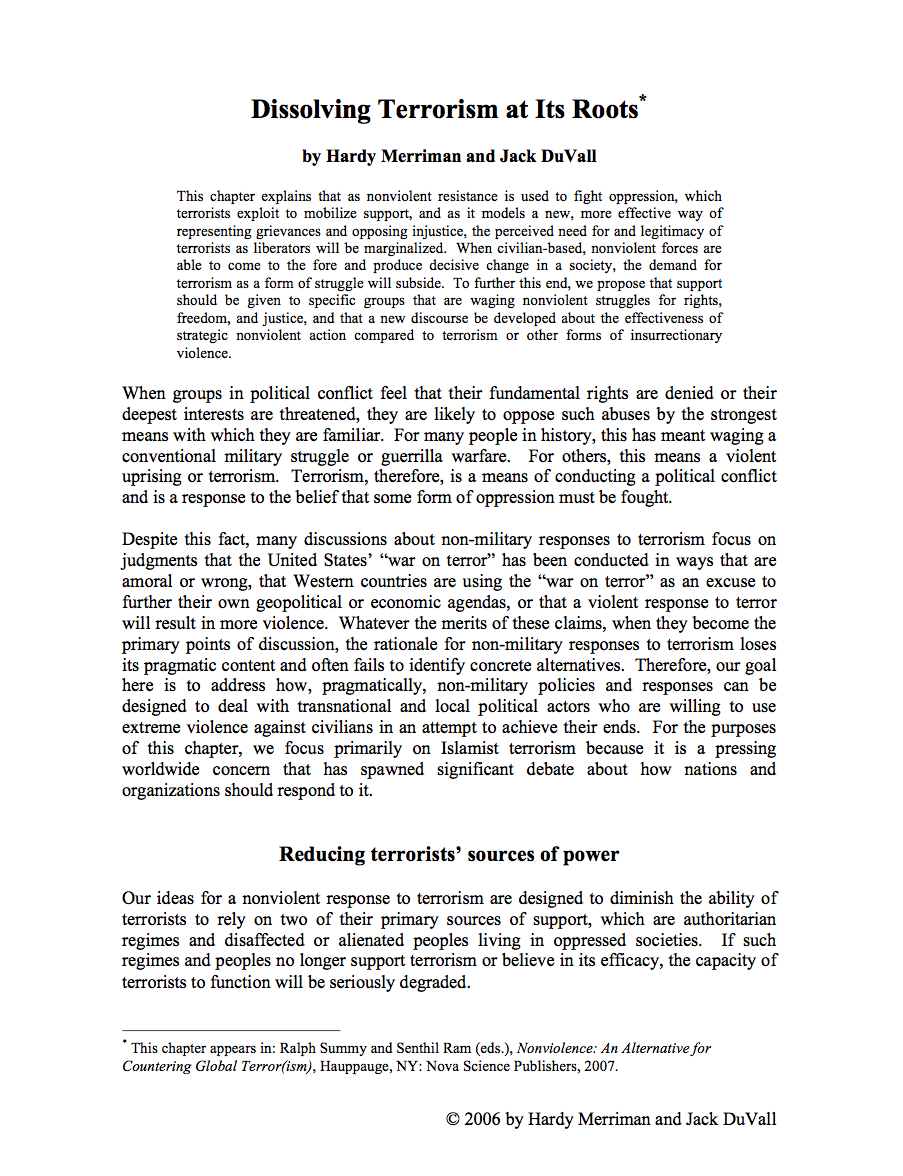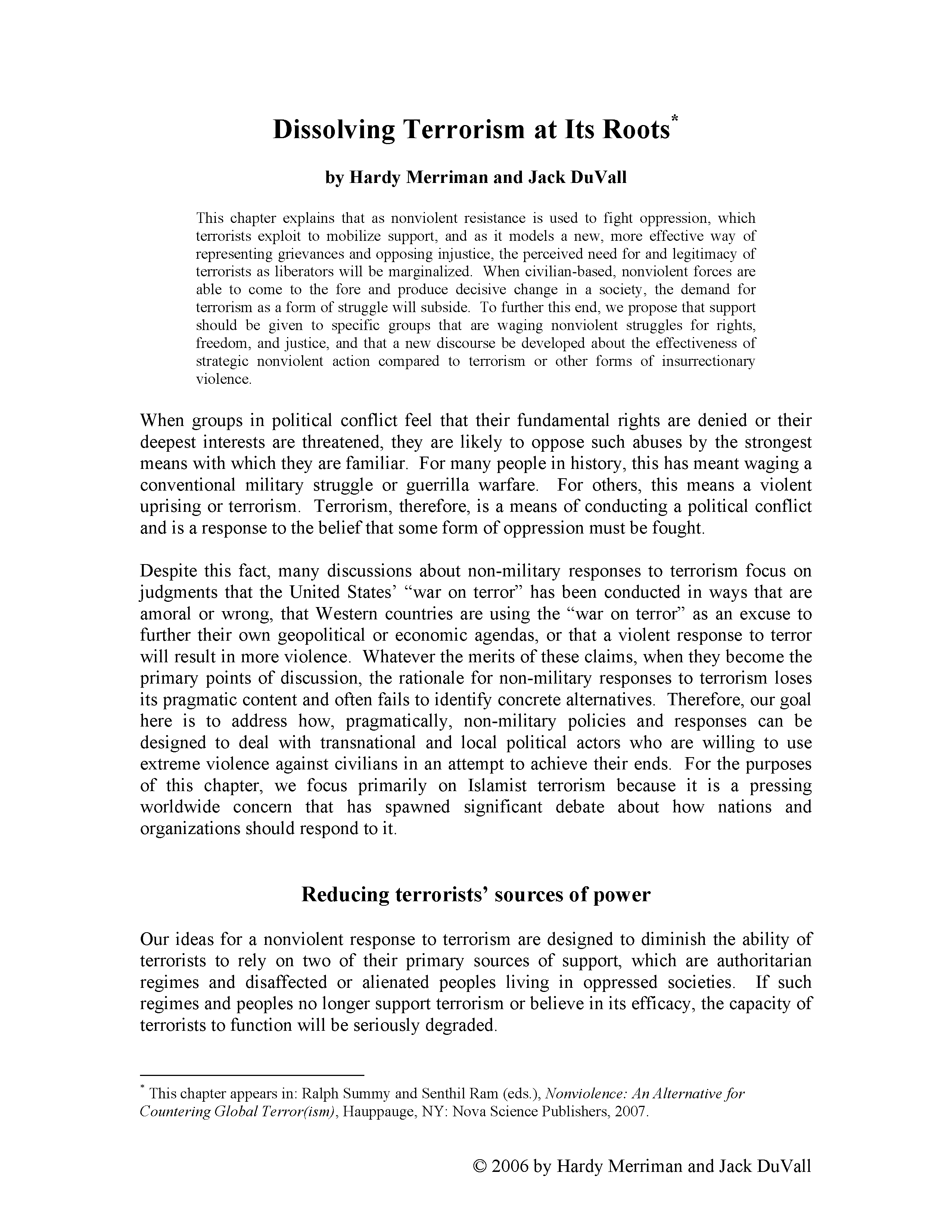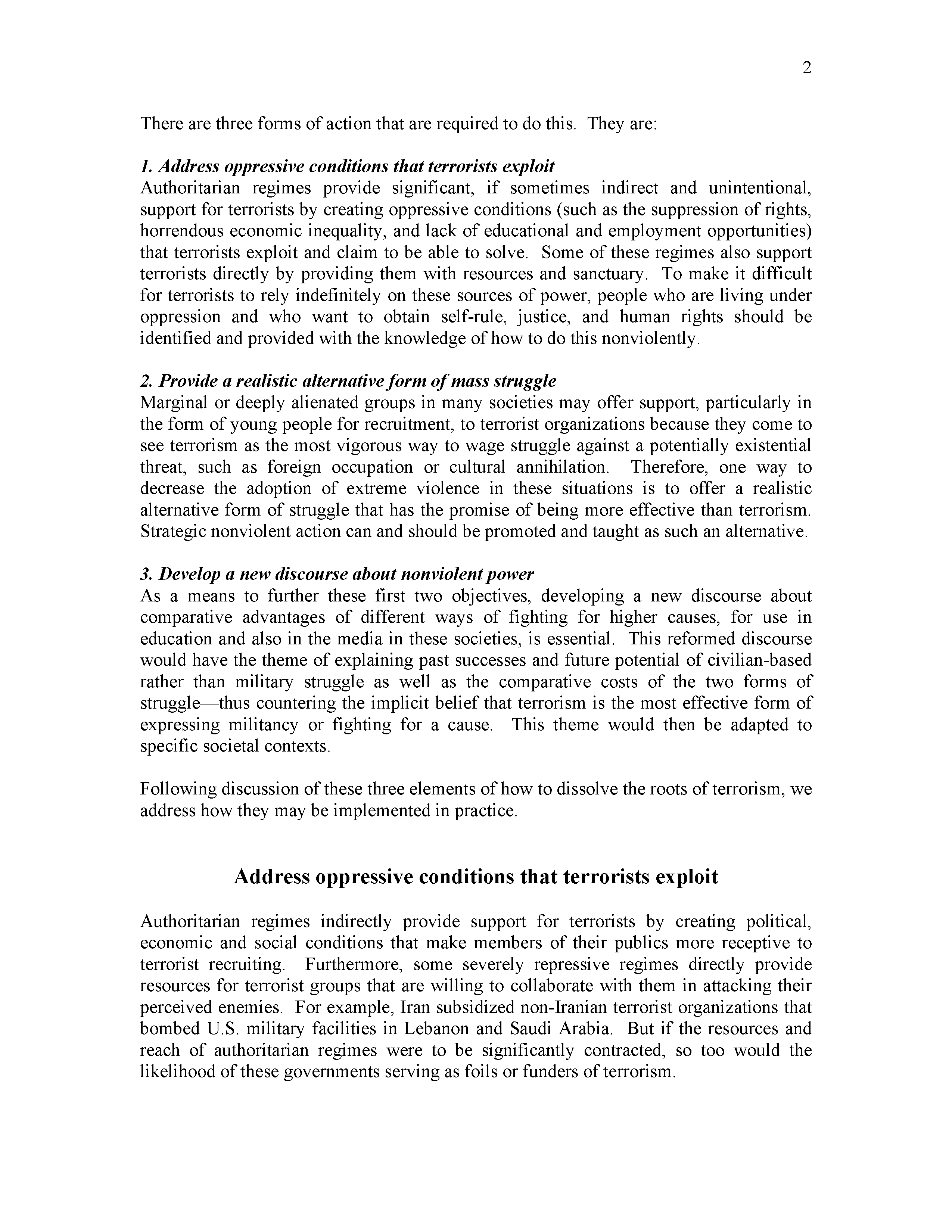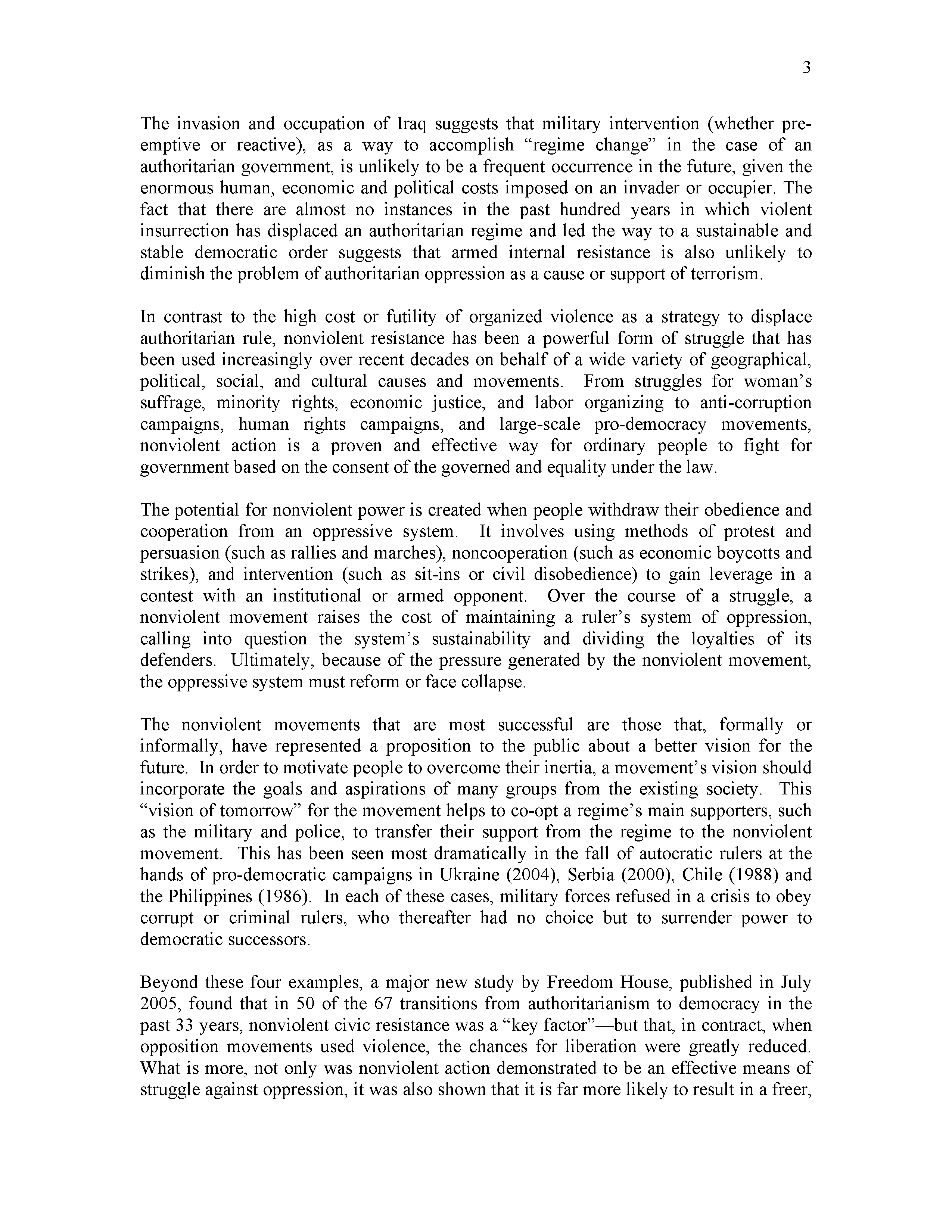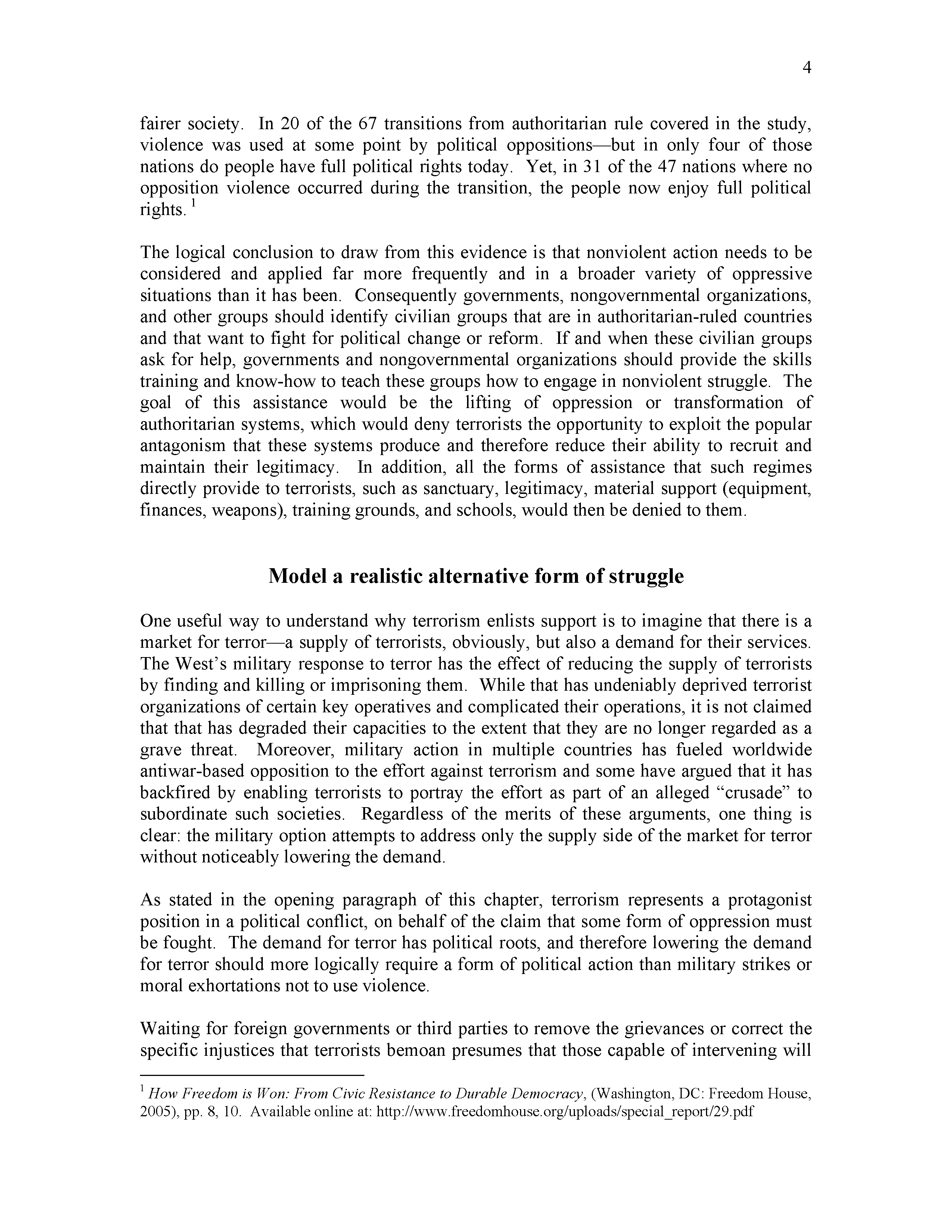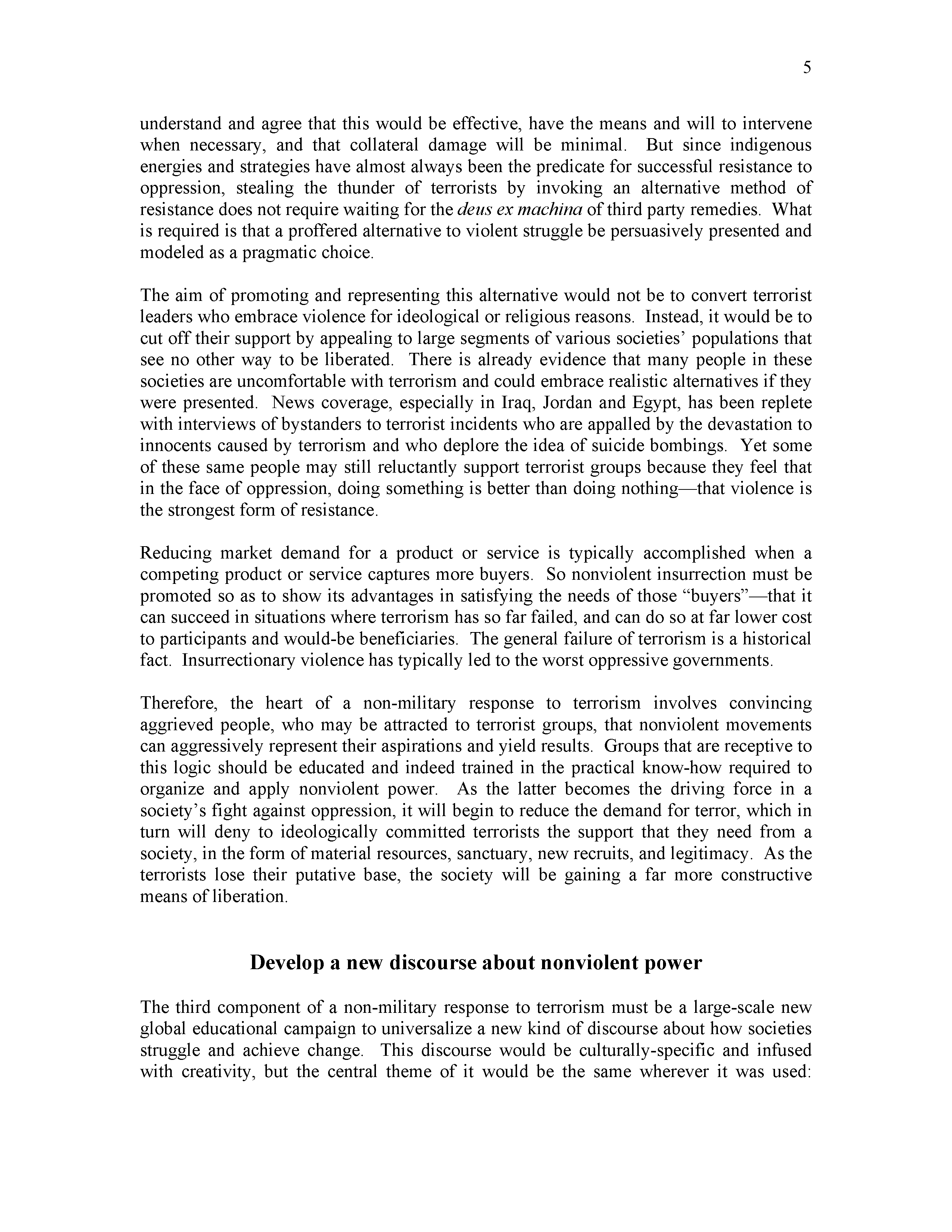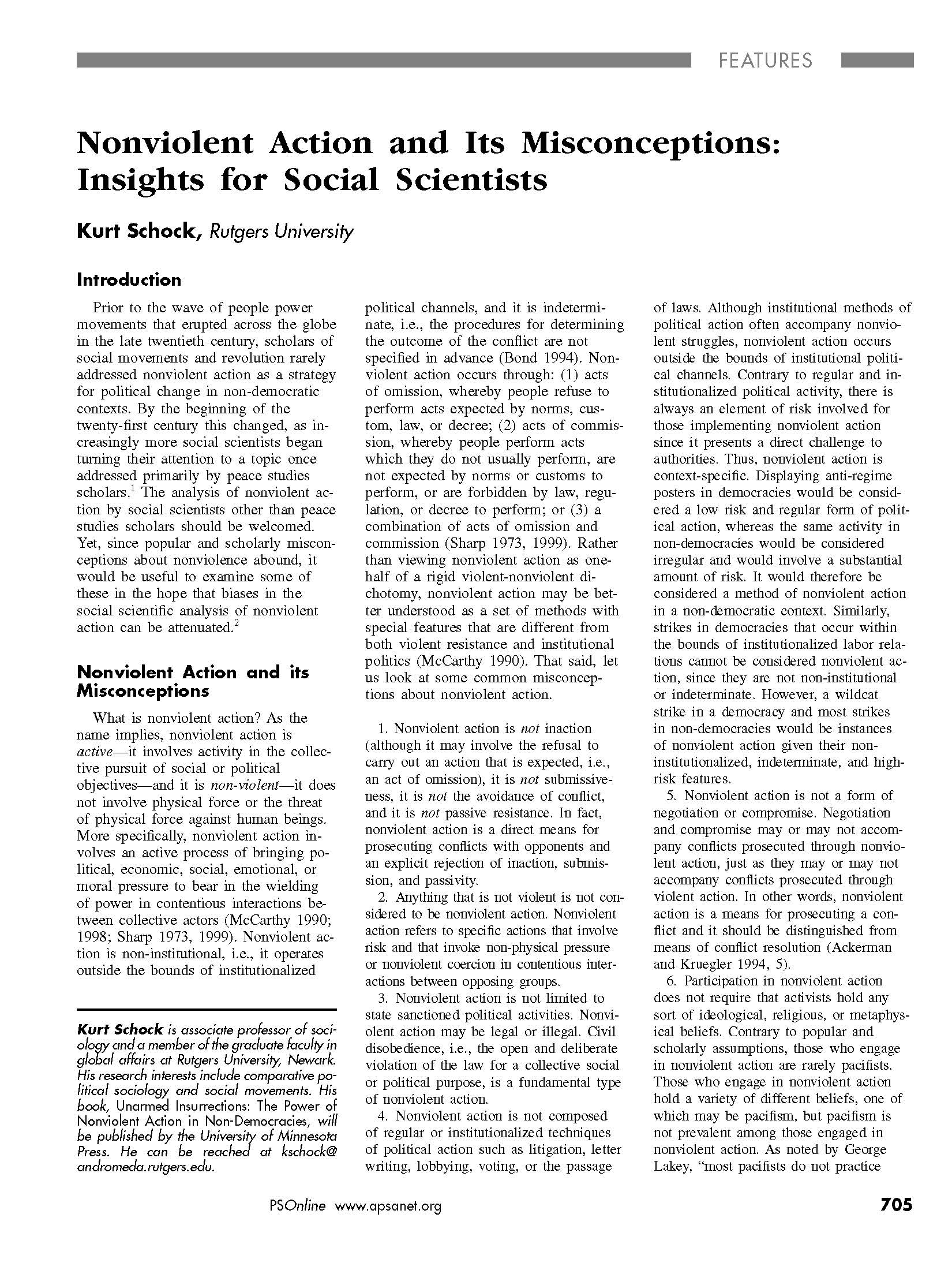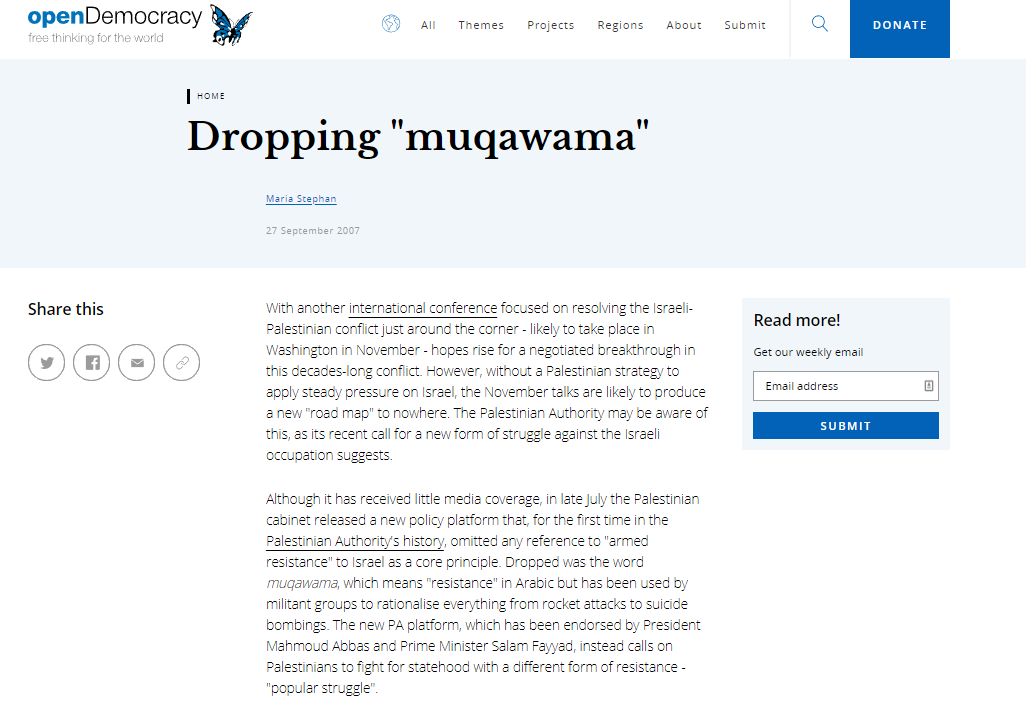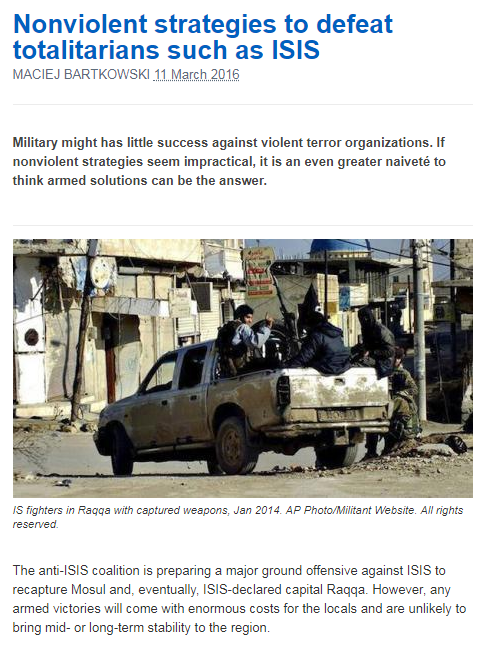Dissolving Terrorism at Its Roots
This chapter explains that as nonviolent resistance is used to fight oppression, which terrorists exploit to mobilize support, and as it models a new, more effective way of representing grievances and opposing injustice, the perceived need for and legitimacy of terrorists as liberators will be marginalized. When civilian-based, nonviolent forces are able to come to the fore and produce decisive change in a society, the demand for terrorism as a form of struggle will subside. To further this end, we propose that support should be given to specific groups that are waging nonviolent struggles for rights, freedom, and justice, and that a new discourse be developed about the effectiveness of strategic nonviolent action compared to terrorism or other forms of insurrectionary violence.
Chapter from: Nonviolence: An Alternative for Defeating Global Terror(ism) , (November 2007)
Editors: Senthil Ram and Ralph Summy
ISBN-10: 1600218121
ISBN-13: 978-1600218125
